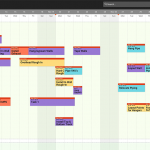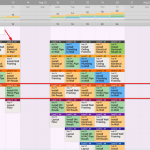You have the right team in place, the materials have arrived on time, and even the weather is cooperating. “What could go wrong?” you think to yourself as the steam rises from your coffee in a perfect arc. And yet, three months later, the project is behind schedule, over budget, and no one even has time for coffee. How did this happen?
Incomplete or nonexistent make ready planning has derailed many projects, and yours is simply the latest casualty. Make ready planning (also called look-ahead planning) is a crucial step in the Last Planner® System between a pull phase plan and the weekly work plan. The aim is always to produce flow for every phase of work. When work is ready for people and people are ready for work, you get good flow and good productivity. The CM or GC’s superintendent (or a designee) is responsible for making work ready.
When you establish a pull phase plan, you’re establishing what the team says should be done. When you create the weekly work plan, you’re saying what you will do. But just because you should be able to do something doesn’t mean that you can do something, which can lead to promises being made that aren’t fulfilled. Make ready planning is designed to prevent this by taking time to establish what can be done and identify constraints.
During this step, the building process is broken down into specific operations or collections of operations, if it’s possible to do more than one at a time. These operations are broken down further into smaller tasks that can be promised individually. Planning at this granular level also identifies any safety and permitting issues that may need to be resolved.
Types of Constraints
There are three major types of constraints that are systematically uncovered during make ready planning. The first type is a directive, which involves getting direction from another party. Permits, RFIs and submittal approvals are all examples of directives.
The second type is a resource constraint. A resource is defined as anything that carries a load, and can include equipment, people, tools or space. “If you’re working in an electrical closet overhead, how many people can work in electric closet overhead? Maybe only one person. That space carries the load of one person,” explains Lean consultant Hal Macomber.
The third type of constraint is materials and prerequisite work. Material constraints are considered resolved when the material is purchased and promised for delivery on time. Increasingly, “on time” is defined as “just-in-time” delivery in which materials are only delivered shortly before installation in order to avoid wasting space, handling the material multiple times and disrupting the jobsite.
Plan Ahead
In order to have time to deal with any constraints identified, make ready planning should be completed well in advance of the work. “The creators of the Last Planner® System said we do this on at least a six-week horizon,” says Macomber.
When make ready planning isn’t performed with enough lead time, or is skipped entirely, constraints are usually identified too late to be addressed without causing delays or rework. If teams take for granted that a project will go according to plan and go directly from pull planning to regular work planning, they risk unforeseen delays and complications.
If you’re not sure whether you’ve done make ready planning, there’s an easy way to check. “If you’re talking about processes versus operations or some small collection of operations, the work’s not ready,” says Macomber.
Ready to start gaining on your schedule again? Invest time and thought in make ready planning and you’ll see the results you’re after.









